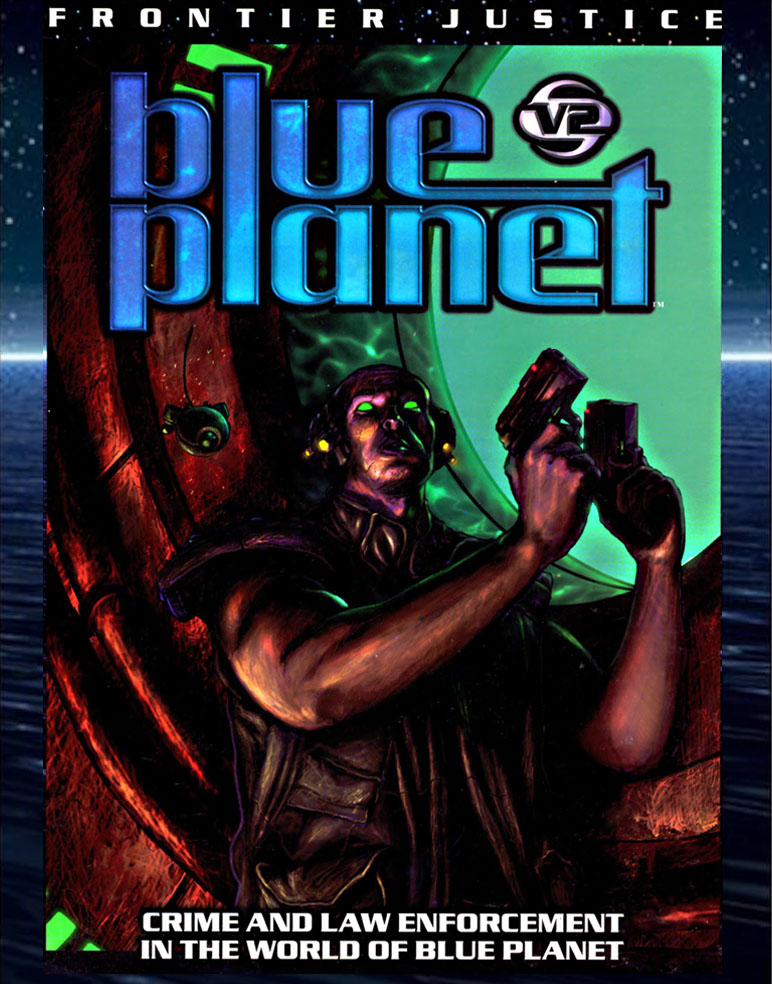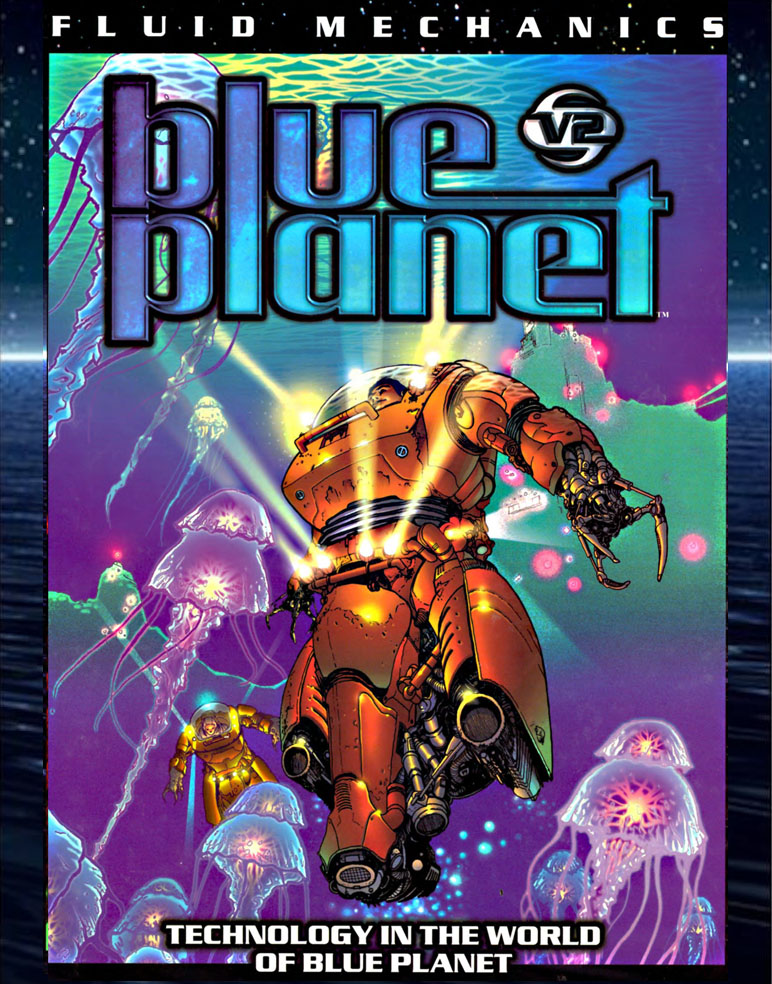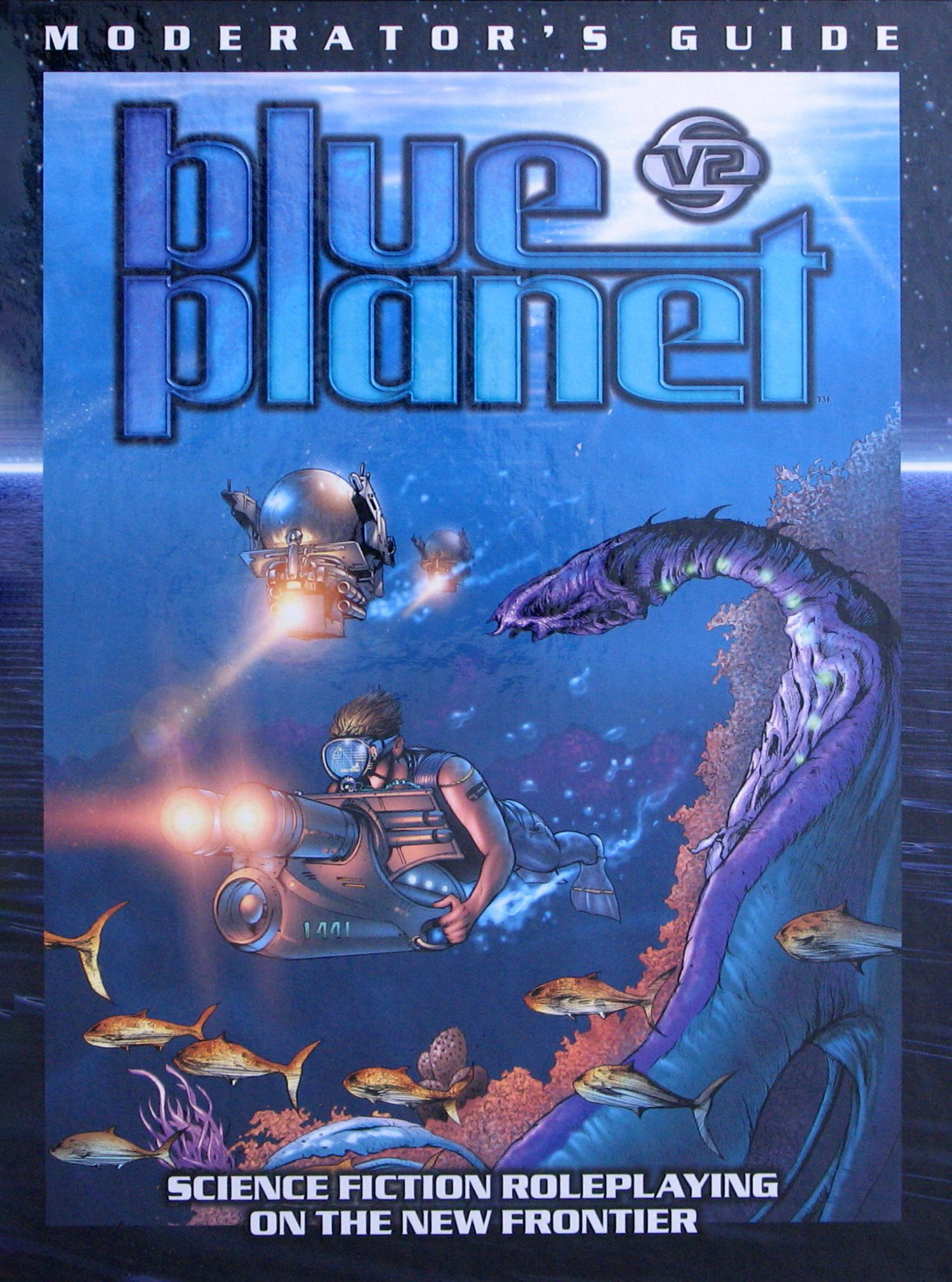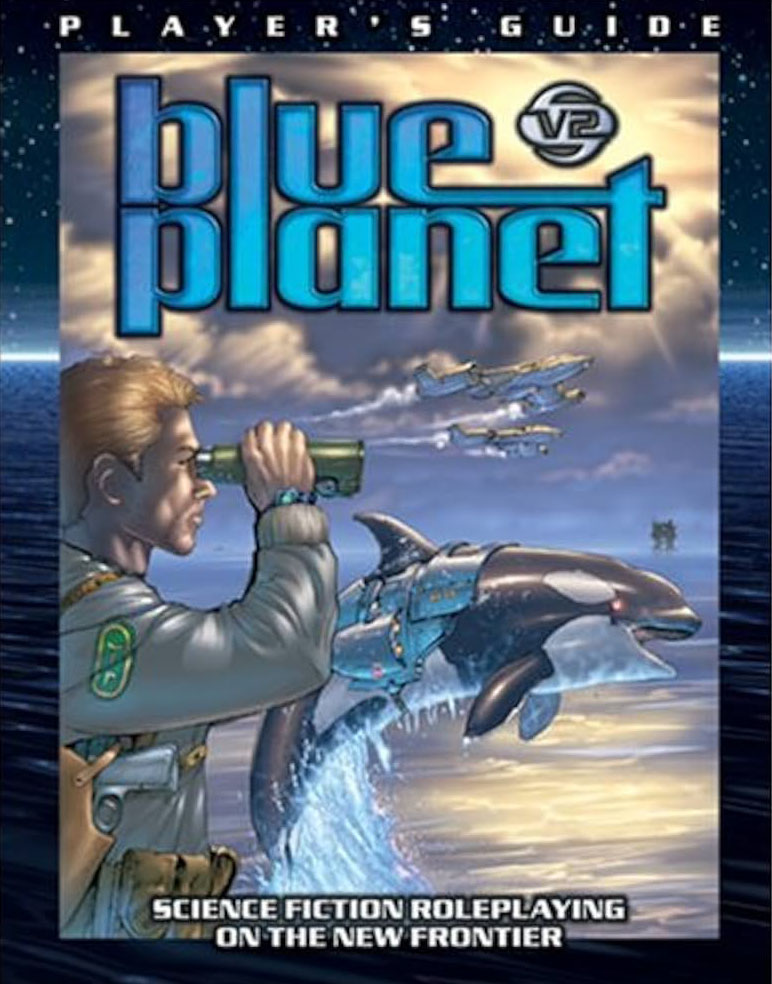Frontier Justice is an incredibly well-researched supplement, providing a valuable investment not only for Blue Planet GMs, but GMs of any game system.
Review Originally Published May 21st, 2001
I’m of a mixed mind when it comes to Frontier Justice. It’s meant to be the sourcebook for “Crime and Law Enforcement” for Blue Planet — and it does that. In fact, it does that with a copious amount of detail and information. Multiple criminal and law enforcement organizations are given a history, culture, scope of affairs, and individual character; the process of committing a wide variety of crimes (and then solving them) is gone over with a figurative pair of tweezers; and, finally, an entire adventure is presented.
So, without a doubt, Frontier Justice accomplishes what it sets out to do.
But after finishing Frontier Justice I felt a reservation, and it took me awhile to nail down exactly what it was. For a long time I thought that the book simply lacked – for want of a better word — excitement. But, upon reflection, I think my problem actually stems from the fact that Frontier Justice is so busy presenting the copious research and creative effort undertaken by its creative team, that it forgets to do so form the viewpoint of a game supplement.
Certainly there is more than enough information here for any GM who wants to get his players intimately involved with either side of the law, but the GM is – to a certain extent – left adrift in this sea of information without a compass or rudder.
Then again, I may just be paranoid.
On the other hand, the wealth of research which has gone into Frontier Justice pays huge dividends – making this a valuable supplement not only for Blue Planet GMs, but GMs of any game system (regardless of genre or time period).
Finally, I should make a note of the adventure – which provides the interesting opportunity of playing both or either side of the story (either the criminals committing the crime or the law enforcement agents trying to solve it).
Style: 4
Substance: 4
Writers: Greg Benage, Catten Ely, Jason Werner
Publisher: Fantasy Flight Games
Line: Blue Planet
Price: $23.95
ISBN: 1-887911-44-8
Production Code: BP05
Page Count: 128
As I discussed in my review of John Tynes’ Power Kill, this was a time frame in which I was beginning to wrap my head around the concept of what I would later call “game structures” (and what I would not refer to more specifically as campaign structures and scenario structures). The thing I was trying to put my finger on in this review of Frontier Justice is the same thing: A ton of valuable information, but lacking the structure that would bring all of that material meaningfully to the game table. (If you want to see the difference, check out how Kenneth Hite’s Nights Black Agents does more than just inundate you with espionage facts — it packs the entire spy thriller and vampire horror genres into structures that make it shockingly easy to fully realize them at the gaming table.)
But, as I said all those years ago, don’t let that overly detract you from Frontier Justice. There’s a TON of really cool reference material here for running crime-based campaigns. (Which is something I’ve been thinking about quite a bit recently.)
For an explanation of where these reviews came from and why you can no longer find them at RPGNet, click here.

















